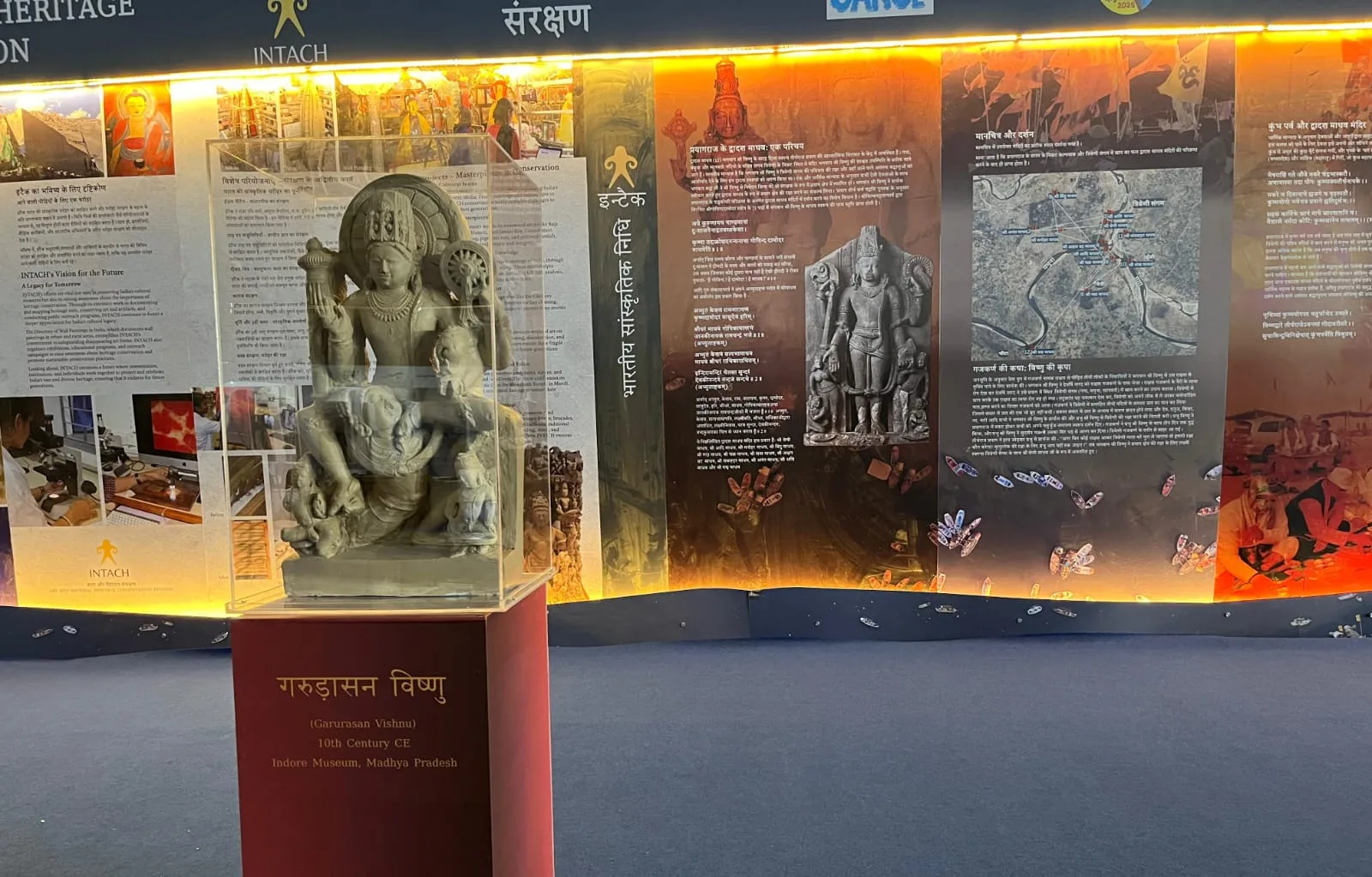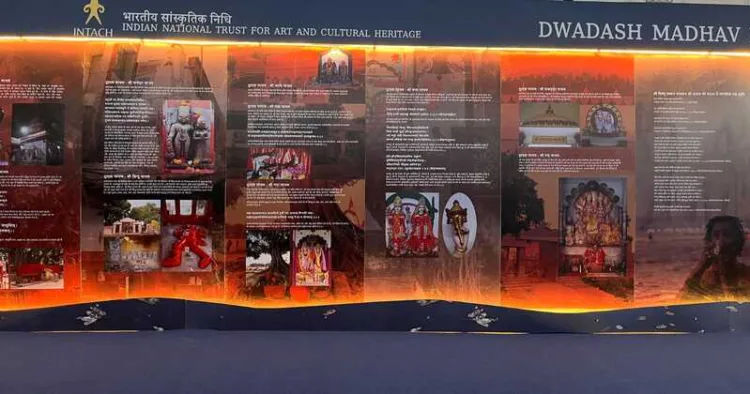Mahakumbh Nagar: In addition to the sacred dip in the Triveni Sangam, the circumambulation of the twelve temples, known as the Dwadash Madhav Parikrama, holds immense significance in the Maha Kumbh journey. To explore the significance of this sacred tradition, a growing number of devotees are visiting the Dwadash Madhav Parikrama Gallery, curated by the Indian National Trust for Art and Cultural Heritage (INTACH), at the Namami Gange Exhibition Hall in Sector 01, Kali Sadak.
This gallery offers an immersive experience, featuring detailed information, visuals, and replicas of rare 10th- and 11th-century idols of Bhagwan Vishnu, including a unique statue of Vishnu in a rare yoga posture. According to mythology, the fruits of Kalpavas near Prayagraj’s Sangam and the sanctity of bathing in the Triveni Sangam are fully realised only after completing the Dwadash Madhav Parikrama.

INTACH has also published a research-based booklet with insights from priests, temple committee members, and other knowledgeable contributors.
Visitors to the gallery gain deeper insights into the Dwadash Madhav temples and their historical and spiritual significance and appreciate the cultural and artistic heritage on display.
The Dwadash Madhav temples—Shri Veni Madhav, Shri Adi Madhav, Shri Manohar Madhav, Shri Bindu Madhav, Shri Gada Madhav, Shri Chakra Madhav, Shri Shankh Madhav, Shri Akshay Vat Madhav, Shri Sankashthar Madhav, Shri Anant Madhav, Shri Asi Madhav, and Shri Padma Madhav—are across various parts of Prayagraj. These temples, dedicated to twelve divine forms of Lord Vishnu, embody the region’s profound spiritual heritage.
In Treta Yuga, revered Maharshi Bharadwaj initiated the Parikrama of these temples. However, this tradition faced interruptions during the Mughal and British eras when several temples were destroyed.
After India’s independence in 1947, Sant Prabhudatta Brahmachari revived the Parikrama in 1961 during the month of Magh with the support of Shankaracharya Niranjan Devtirth and Dharmasamrat Swami Karpatri Ji Maharaj.
Today, under the Yogi government, the tradition of Parikrama continues seamlessly, symbolizing the enduring spiritual devotion of devotees.
The Dwadash Madhav temples are believed to reflect Bhagwan Vishnu’s eternal presence at Triveni Sangam, the sacred confluence of the Ganga, Yamuna, and Saraswati rivers.
According to classical belief, Bhagwan Vishnu manifested in these twelve forms to preserve the sanctity of the Sangam and bless countless devotees.
Another legend holds that Lord Brahma and other deities implored Lord Vishnu to establish himself in the Prayag region as its divine protector. In response, Vishnu vowed to safeguard the land, taking the form of Dwadash Madhav to fulfill this celestial duty.
These temples stand as timeless symbols of devotion, offering spiritual solace and connecting pilgrims with the rich mythology of Tirtharaj Prayag.



















Comments